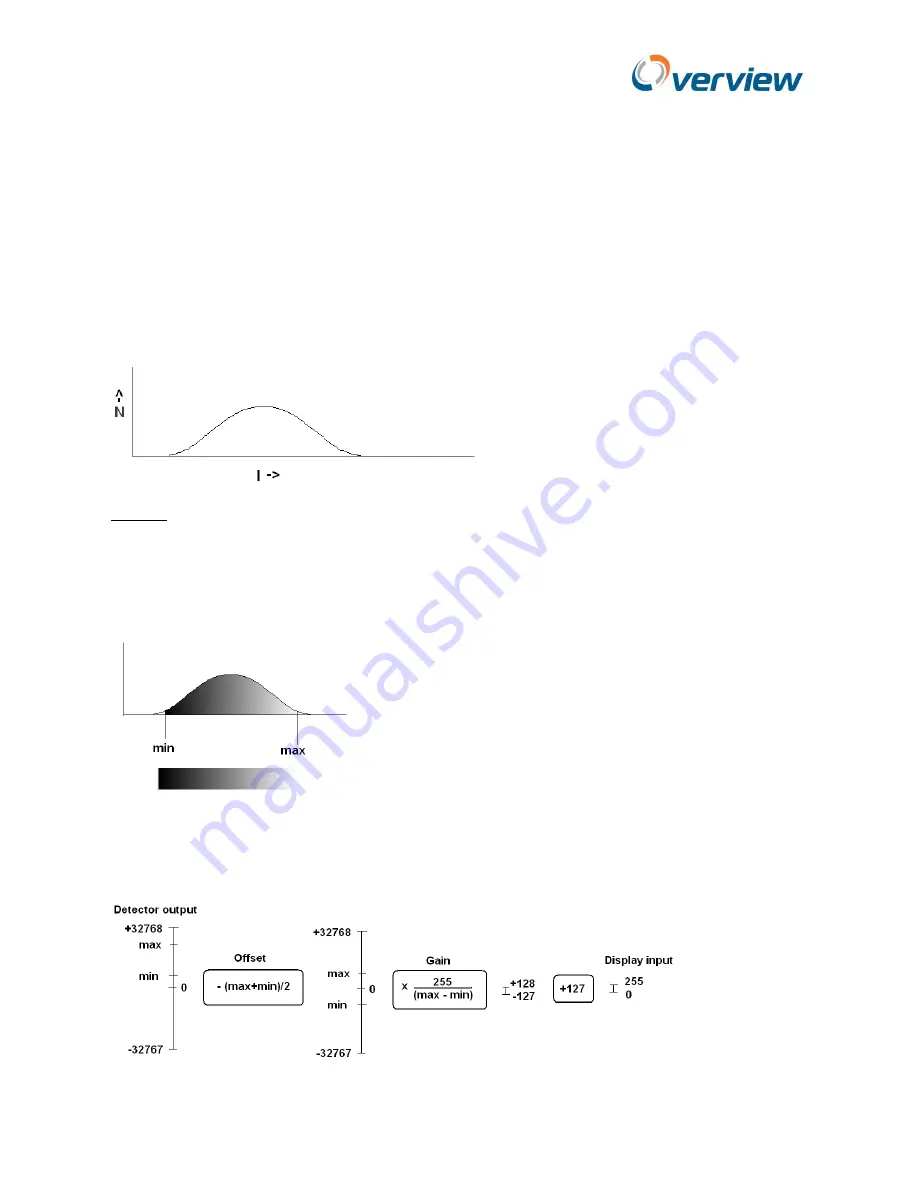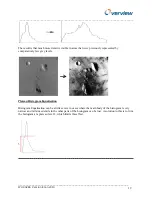
__________________________________________________________________________________
__________________________________________________________________________
IPU 40285 Version E Jan 2013
16
Contrast Schemes
Infrared detectors produce an analogue voltage for each pixel intensity, which is converted by means
of an analogue to digital converter to a digital number. For the best possible image, the digital number
must have enough bits of precision to represent the smallest temperature change that the detector can
see (often 14 or 16). A signed 16 bit number has a range of -32767 to +32768, but many display
devices have an 8 bit greyscale input range of 0 to 255. The method of mapping the detector output
range onto the display input range will effect how the image appears, and this mapping is what we call
a contrast scheme.
Let’s say an image has a histogram (number of pixels vs pixel intensity) as shown belo
w:
Median
Possibly the most straightforward contrast scheme would be to find the hottest object in the scene and
assign it white colour (255) and the coldest object in the scene and assign it black colour (0), and
distribute the 256 greyscale levels linearly, perhaps ignoring a number of outliers at both ends of the
histogram.
The means of achieving this is to subtract an offset to centre the image around the midpoint of the
detector output range, and then to multiply by a gain to stretch or shrink the image to fit into the
display input range.


















